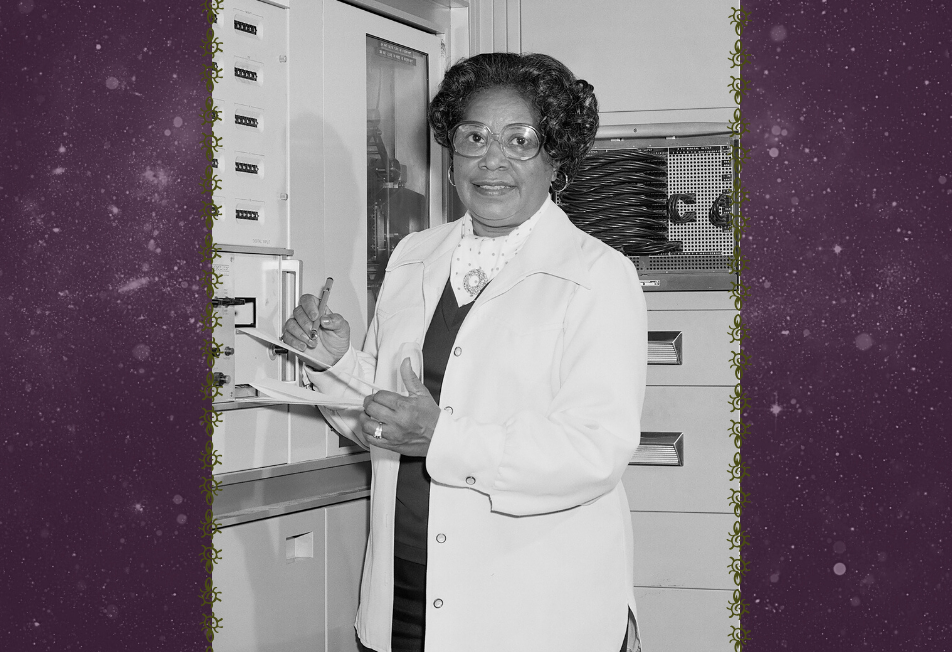NASA names headquarters after Mary W. Jackson, space agency’s first Black female engineer

On Wednesday, NASA Administrator Jim Bridenstine announced the agency’s headquarters building in Washington, D.C., will be named after Mary W. Jackson, NASA’s first Black female engineer.
NASA’s Headquarters will be named the Mary W Jackson NASA Headquarters. Mary Jackson was @NASA's first African-American female engineer. She elevated America’s space program & led towards inclusion. Looking forward to holding a formal naming ceremony soon. https://t.co/R5tYNKPYNS pic.twitter.com/vKuIzMwpGN
— Jim Bridenstine (@JimBridenstine) June 24, 2020
Jackson, who was a mathematician and an aerospace engineer, was one of NASA’s “hidden figures” and played a pivotal role in getting the first Americans into space. Her career began at NASA’s segregated West Area Computing Unit in the Langley Research Center in Hampton, Virginia.
She became a leader within the organization, hiring and promoting numerous women.
“Mary W. Jackson was part of a group of very important women who helped NASA succeed in getting American astronauts into space. Mary never accepted the status quo, she helped break barriers and open opportunities for African Americans and women in the field of engineering and technology,” Bridenstine said in a statement.
“We proudly announce the Mary W. Jackson NASA Headquarters building. It appropriately sits on ‘Hidden Figures Way,’ a reminder that Mary is one of many incredible and talented professionals in NASA’s history who contributed to this agency’s success. Hidden no more, we will continue to recognize the contributions of women, African Americans, and people of all backgrounds who have helped construct NASA’s successful history to explore.”
Jackson, who was born and raised in Hampton, Virginia, graduated from the Hampton Institute in 1942 with a dual degree in math and physical sciences.
She initially worked as a math teacher in Maryland, and then became a bookkeeper. She married Levi Jackson and started a family before being recruited by the National Advisory Committee for Aeronautics in 1958.
Jackson’s NASA career started as a research mathematician, working under Dorothy Vaughan in the agency’s segregated unit. Within two years, she was working in the 4-foot by 4-foot Supersonic Pressure Tunnel, a 60,000 horsepower wind tunnel capable of blasting models with winds approaching twice the speed of sound. This gave her the opportunity to run her own experiments.
She was eventually referred to a NASA training program that would allow her to be promoted from a mathematician to an engineer but because the classes were held in a segregated high school, she needed special permission to participate.
Upon completing the course in 1958, Jackson became NASA’s first Black female engineer, a career she held for nearly 20 years. During that time, she authored or co-authored several reports, many of them on the behaviour of the boundary layer of air around airplanes.
In 1979, she joined Langley’s Federal Women’s Program, working to hire and promote female scientists. She retired in 1985.
“NASA facilities across the country are named after people who dedicated their lives to push the frontiers of the aerospace industry. The nation is beginning to awaken to the greater need to honour the full diversity of people who helped pioneer our great nation. Over the years NASA has worked to honor the work of these Hidden Figures in various ways, including naming facilities, renaming streets, and celebrating their legacy,” Bridenstine said.
“We know there are many other people of colour and diverse backgrounds who have contributed to our success, which is why we’re continuing the conversations started about a year ago with the agency’s Unity Campaign. NASA is dedicated to advancing diversity, and we will continue to take steps to do so.”
